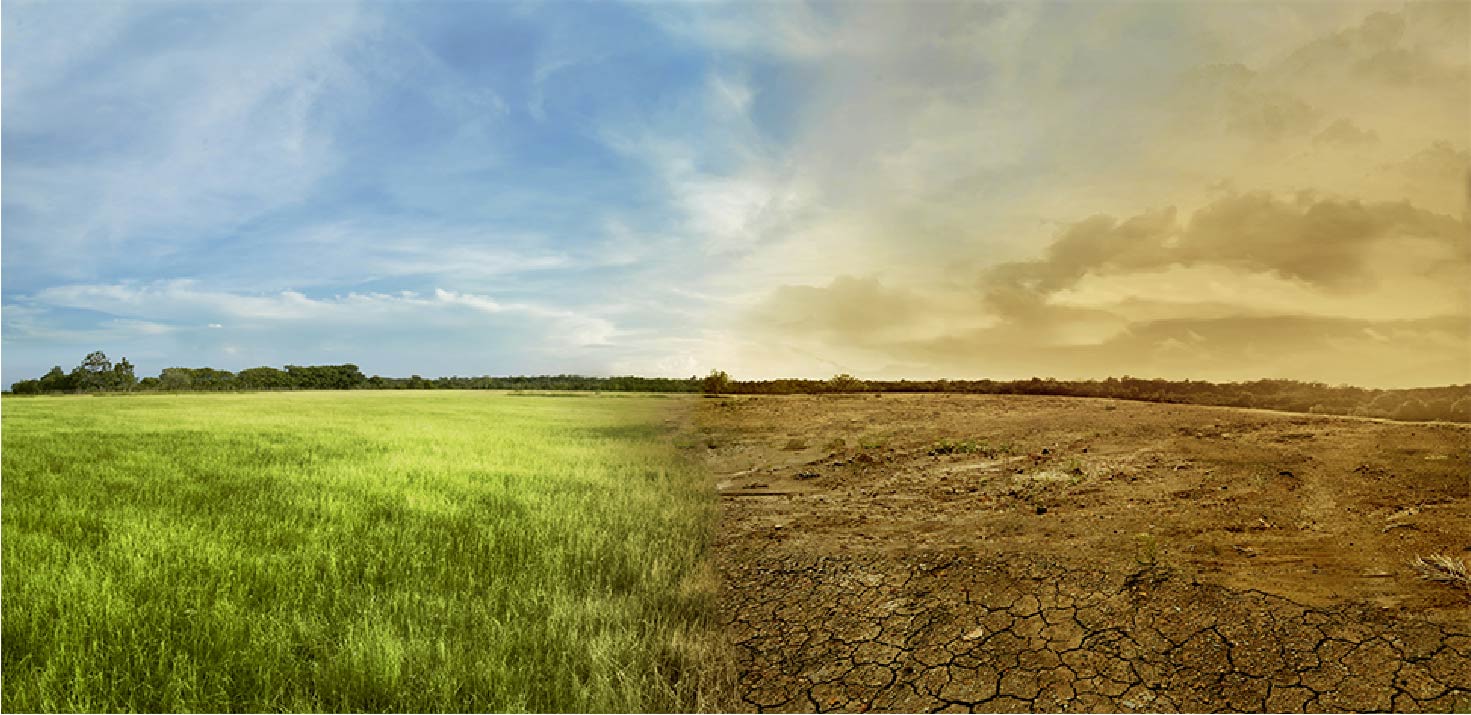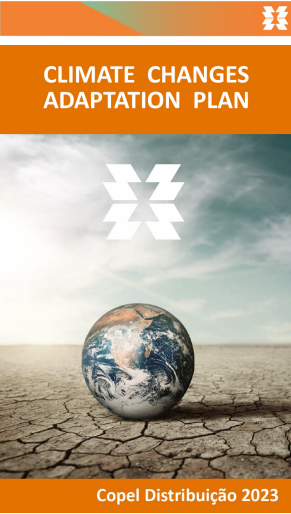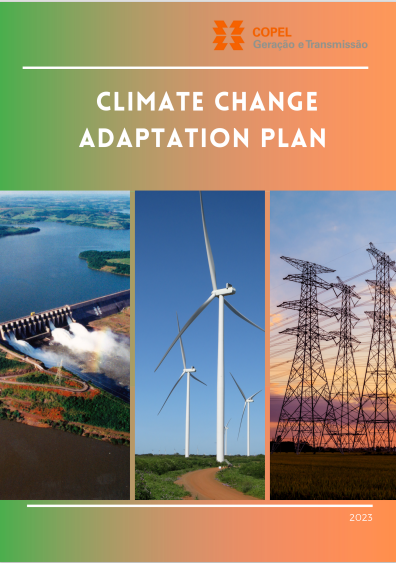Climate Change Impact Management
Climate change main impacts to Copel business are related to temperature, wind and rain historical patterns.
The water crisis, caused by lack of rain for long periods within a specific region, decreases considerably the reservoir level and the power generation, even though it can be mitigated due to the country ́s continental dimensions and the existence of a national interconnected system that enables offset.
The wind speed, even though it has positive impact for wind power stations, is damaging to power transmission and distribution lines.
Due to that, Copel has a risk management process that incorporates the impacts caused by climate change, in order to prevent, decrease, mitigate and adapt the Company activities to climate changes and extreme events.

Climate Change Risk Management
Meteorological events of high intensity in a short period of time, such as heavy rainfall, gusts of wind and lightning, have become more frequent and more severe, and can cause physical damage to structures and facilities of generation, transmission and distribution of energy, leading to interruption of supply, in addition to operational costs to rebuild the system.
The scarcity of rainfall can compromise the storage of the reservoirs of Copel’s hydroelectric plants, resulting in a temporary reduction in the Company’s generation capacity, whose potential is predominantly from hydraulic sources.
Considering water resource use priorities set forth in Law no. 9433/1997, in case of lack of water, human consumption and animal thirst-quenching are priorities, thus hydroelectric power generation is changed and reservoirs start to supply priority conditions.
Monthly average precipitation changes, that can cause affluent average flow increase to power stations operated by Copel, and they can also provide impacts, including structure sizing review requirement, in order to increase its capacity due to new data and improvement generation physical assurance increase.
Intense wind action (above 70 km/h) impacts the company physical structures, causing distribution (high and medium voltage) and transmission interruptions, causing financial impacts and team commissioning.
Temperature increase enabled consumption increase due to intense use of chilling and air conditioning equipment, and it enforces restrictions electrical installations rated capacity.
Transmission and distribution lines are built to operate within a specific project temperature, which considers room temperature and cable heating caused by electric current flow. As room temperature increases, power current flow needs to be decreased to offset temperature decrease.
In order to follow climate phenomenon development in real-time, Copel relies on a sophisticated weather numeric forecast system, with the routine operation of the North-American numeric template Weather Research and Forecasting (WRF), supplied by local data and North-American global template GFS borders.
Climate Change Adaptation
The Company has an Adaptation Subcommittee to discuss and propose a risk survey methodology related to climate change to the areas responsible for power generation, transmission and distribution processes.
As a Climate Change Adaptation measure, Copel develops actions with the purpose of mitigating climate change effects, including criteria review used in new undertaking projects, which are reviewed on a daily basis, and according to the region to be implemented. Project deployment is prioritized with more robust structure and higher wind resistance, following actual data and future extrapolations for each region surveyed.
Copel intends to anticipate measures to minimize such risk impact, using contingency support structures, meteorological monitoring performance, and providing on-call staff to work in the system recomposition as soon as possible, whenever required.
For heavy rain situation, Copel has emergency action plans for its hydropower undertaking dams, in which actions to be executed in case of anomaly are set forth, identifying preventive and corrective procedures.
Moreover, it keeps a hydro-climatological station network and ongoing weather forecast services, providing satellite and meteorological radar images and quantitative forecasts within the regions the Company has facilities.
Distribution Business
Aligned with the Company’s strategic guidelines, Copel Distribuição prepared the Climate Change Adaptation Plan in order to guide decision-making regarding the necessary and priority investments in the facilities, as well as the implementation of improvements in the subsidiary’s undertakings.
In addition to the analysis of climate scenarios, future projections and risks, the document addresses the management of emissions and targets, in accordance with the commitments made.
Generation and Transmission Business
Aligned with the Company’s strategic guidelines, Copel Geração e Transmissão prepared the Climate Change Adaptation Plan in order to guide decision-making regarding the necessary and priority investments in the facilities, as well as the implementation of improvements in the subsidiary’s undertakings.
In addition to the analysis of climate scenarios, future projections and risks, the document addresses the management of emissions and targets, in accordance with the commitments made.






